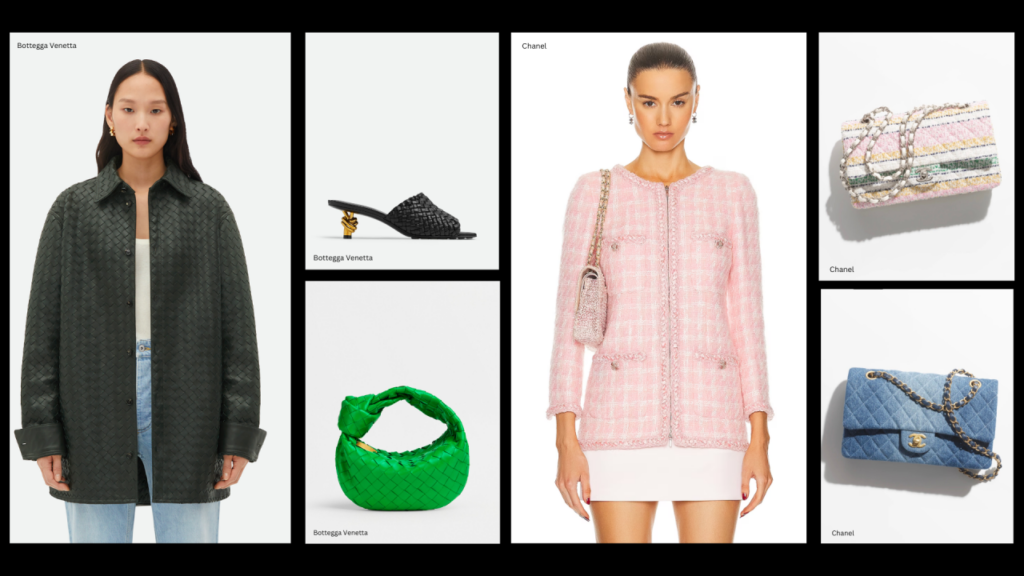In a world increasingly aware of environmental issues, sustainable fashion has emerged as a vital movement. Consumers are more conscious than ever about the impact of their clothing choices on the planet. This guide will explore practical steps you can take to embrace sustainable fashion without compromising on style.
Page Contents
Understand Sustainable Fashion
Sustainable fashion is an evolving concept that aims to create a more environmentally and socially responsible industry. It encompasses a broad range of practices and philosophies focused on reducing the negative impacts of clothing production and consumption on the planet and its people. Understanding sustainable fashion is crucial for consumers who want to make informed choices and contribute to a healthier world.
At its core, sustainable fashion prioritizes the use of eco-friendly materials, such as organic cotton, hemp, and recycled fibers. These materials are produced with minimal harm to the environment, reducing water usage, chemical pollution, and waste. By choosing garments made from sustainable materials, consumers can lessen their ecological footprint and support a more sustainable textile industry.
Moreover, sustainable fashion emphasizes ethical production practices. This includes fair labor conditions, safe working environments, and fair wages for workers in the garment industry. By supporting brands that uphold these values, consumers can contribute to a fashion ecosystem that respects human rights and promotes social equity.
Another vital aspect of sustainable fashion is the promotion of a circular economy. This concept encourages recycling, upcycling, and repurposing clothing to extend its lifecycle and reduce waste. By embracing second-hand shopping and clothing swaps, consumers can play an active role in minimizing the amount of textile waste that ends up in landfills.
In addition to individual choices, sustainable fashion also involves supporting brands and initiatives committed to transparency and sustainability. Many brands are now publishing their supply chain practices, making it easier for consumers to make ethical decisions.
Ultimately, understanding sustainable fashion empowers individuals to make choices that benefit both the environment and society. By prioritizing sustainability in fashion, we can foster a healthier planet and promote a more equitable future for all.
Choose Eco-Friendly Materials for Sustainable Fashion

When it comes to sustainable fashion, choosing eco-friendly materials is one of the most impactful decisions you can make. The fashion industry is notorious for its environmental footprint, contributing to pollution, water waste, and resource depletion. By opting for eco-friendly materials, consumers can significantly reduce their impact and promote a more sustainable future.
Organic Cotton
Organic cotton is grown without synthetic pesticides or fertilizers, making it a safer choice for both the environment and farmers. This method of cultivation enhances soil health, conserves water, and reduces chemical runoff, contributing to a healthier ecosystem. Organic cotton garments are soft, breathable, and often more durable than conventionally grown cotton, making them a wise investment for your wardrobe.
Tencel and Lyocell
Tencel, a brand name for lyocell, is a fiber made from sustainably sourced wood pulp. The production process uses a closed-loop system, which means that the solvents used to produce the fiber are recycled and reused, minimizing waste. Tencel is known for its luxurious feel, moisture-wicking properties, and biodegradability, making it an excellent choice for both comfort and sustainability.
Recycled Fabrics
Using recycled materials, such as recycled polyester made from plastic bottles, is another way to support eco-friendly fashion. By repurposing existing materials, the demand for virgin resources decreases, reducing the overall carbon footprint. Recycled fabrics can be found in a variety of clothing types, from activewear to everyday essentials, combining style with sustainability.
Hemp
Hemp is a highly sustainable crop that requires minimal water and no pesticides. The fibers produced are incredibly strong and durable, making hemp garments long-lasting. Additionally, hemp production contributes to soil health and can even help reduce carbon dioxide in the atmosphere.
Invest in Quality over Quantity

In today’s fast-paced consumer culture, the mantra of “buy more, spend less” has become the norm. This often leads to a wardrobe filled with low-quality, trendy pieces that quickly fall out of fashion or wear out after a few uses. However, shifting the focus from quantity to quality can revolutionize the way we approach our clothing choices, fostering a more sustainable and satisfying fashion experience.
The Benefits of Quality Clothing
Investing in high-quality garments offers numerous advantages, both for the consumer and the environment. First and foremost, quality clothing is typically more durable. Well-made items can withstand wear and tear, meaning they last longer and don’t need to be replaced as often. This longevity not only saves money in the long run but also reduces waste, as fewer clothes end up in landfills.
Furthermore, high-quality garments often come with better fit and craftsmanship. Brands that prioritize quality usually pay close attention to design, materials, and construction techniques, resulting in clothing that feels comfortable and looks good. When you wear well-fitted, well-made clothing, you’re more likely to feel confident and put-together, enhancing your overall style.
The Environmental Impact
Fast fashion has been criticized for its significant environmental footprint, which includes excessive water usage, chemical pollution, and waste generation. By choosing quality over quantity, consumers can actively participate in reducing this impact. High-quality garments are often produced using sustainable practices, and they encourage a more responsible consumption model.
Moreover, the emphasis on durability means that quality pieces are less likely to be discarded after a short period. This shift helps combat the throwaway culture associated with fast fashion and promotes a more circular economy, where clothing is valued, repaired, and recycled rather than tossed aside.
Curating a Timeless Wardrobe
Investing in quality clothing encourages consumers to think critically about their wardrobe. Instead of impulsively purchasing trendy items that may only be worn a few times, it promotes a more thoughtful approach to fashion. Curating a timeless wardrobe filled with classic pieces can provide versatility and longevity.
Consider staple items such as a well-fitted blazer, a classic white shirt, or high-quality jeans. These pieces can be styled in various ways for different occasions, maximizing their utility. By focusing on timeless styles rather than fleeting trends, individuals can build a wardrobe that remains relevant season after season.
Supporting Ethical Brands

In recent years, there has been a growing shift in consumer behavior towards supporting ethical brands, especially in the fashion industry. Ethical fashion brands focus on creating products that are environmentally friendly, socially responsible, and transparent in their practices. By supporting these brands, consumers can play a crucial role in fostering a more sustainable and equitable fashion industry.
What Makes a Brand Ethical?
An ethical brand prioritizes sustainability, fair labor practices, and transparency throughout its production process. These brands are committed to minimizing their environmental impact by using eco-friendly materials, reducing waste, and implementing responsible production methods. For instance, many ethical fashion brands use organic cotton, recycled fabrics, or biodegradable materials to lessen their carbon footprint.
In addition to environmental responsibility, ethical brands often ensure that their workers are treated fairly. This means providing safe working conditions, fair wages, and reasonable hours. Many fast fashion brands exploit cheap labor in developing countries, paying workers low wages in unsafe conditions. Ethical brands stand against this, promoting human rights and fair treatment for all workers involved in the production process.
The Importance of Transparency
One of the hallmarks of an ethical brand is its transparency. These companies openly share information about their supply chains, production processes, and sustainability initiatives. Transparency allows consumers to make informed decisions about where their money goes, ensuring that they support brands that align with their values.
Ethical brands often provide certifications, such as Fair Trade, GOTS (Global Organic Textile Standard), or B Corporation status, which verify their commitment to ethical and sustainable practices. This transparency builds trust between the brand and the consumer, creating a more meaningful connection.
Why Supporting Ethical Brands Matters
By choosing to support ethical fashion brands, consumers can help shift the industry towards more responsible practices. Every purchase becomes a vote for a fairer and more sustainable fashion industry. Supporting ethical brands also encourages larger, more mainstream companies to adopt better practices to meet the increasing demand for sustainability.
Moreover, buying from ethical brands contributes to a slower, more mindful approach to fashion. Instead of constantly purchasing fast fashion items that are quickly discarded, consumers can invest in high-quality, timeless pieces from ethical brands. This not only promotes sustainability but also reduces the amount of clothing waste that ends up in landfills.
When you invest in quality clothing, you often support brands that prioritize ethical and sustainable practices. Many high-quality brands are committed to fair labor practices, environmentally friendly materials, and transparency in their supply chains. By choosing to purchase from these brands, you contribute to a more ethical fashion industry.
Additionally, investing in quality often means supporting small or local businesses that prioritize craftsmanship over mass production. This not only strengthens local economies but also fosters a connection between consumers and the makers of their clothing, encouraging a more meaningful shopping experience.
Instead of buying fast fashion items that are often of lower quality, invest in timeless pieces that will last for years. Look for brands that prioritize craftsmanship and durability.
Support Ethical Brands
Research brands that prioritize ethical practices, such as fair labor conditions and sustainable sourcing. Supporting these companies helps foster a more responsible fashion industry.



